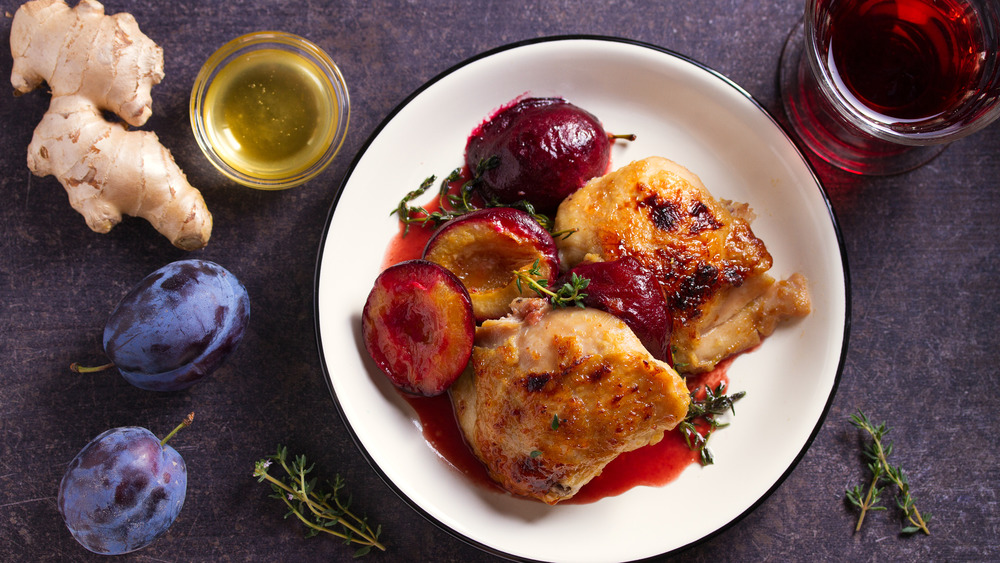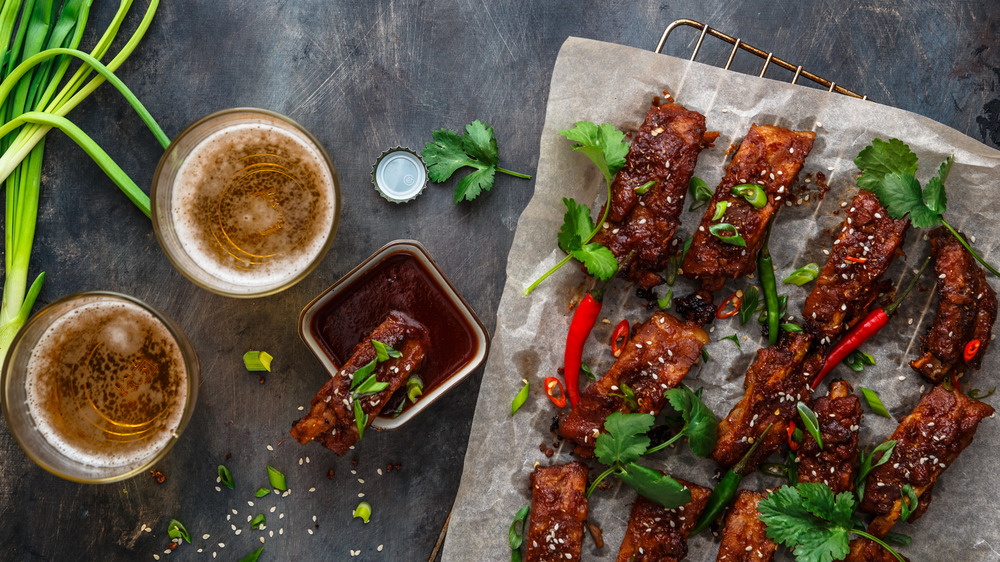The Big Difference Between Plum Sauce And Hoisin Sauce
Although the popular Chinese condiments hoisin sauce and plum sauce share some common ingredients, these staples of Chinese cooking have different flavor profiles. Whereas hoisin sauce is decidedly savory and tangy, causing some to liken it to a "Chinese barbecue sauce," plum sauce is sweeter, fruitier, and sometimes even described as "jammy" (via Curious Cuisinere).
Hoisin is a staple of southern Chinese cuisine (via Omnivore's Cookbook). According to Tasty, hoisin, similar to its American counterpart, barbecue sauce, is dark, thick, and sticky — think of the sauce that comes on your favorite Chinese restaurant's barbecue ribs. From the sound of things, one could even describe it as a kind of sweet, tangy barbecue sauce that has been infused with soy. Hoisin is made by combining sugar, fermented soybeans, vinegar, garlic, salt, wheat or potato starch, chili, and other spices. This intensely-flavored and versatile sauce is often used in stir-fries, as a dipping sauce, or as a marinade and glaze for meats.
Plum sauce contains fruit
Like hoisin, plum sauce contains chili, garlic, vinegar, and sugar, but sweet plums are the star of this sauce, according to Taste Atlas. This makes plum sauce sweeter and less savory than hoisin, but both can be used to cook savory dishes such as ribs or poultry. Plum sauce is also a popular condiment in Chinese restaurants and can be used as a dip for dumplings or spring rolls.
Curious Cuisinere describes Chinese plum sauce as "smooth and sticky" with a balance of sweet, tart, and spice (including ginger and sometimes star anise or Chinese five spice powder) flavors, though its sweetness and tartness are less pronounced than Chinese sweet and sour sauce. It has a thick consistency that makes it conducive to basting and spreading. When made with red plums it has a rich, purple color, whereas golden plums will yield a lighter plum sauce. Moreover, fruits such as apricots can be incorporated to thicken the sauce. In fact, sometimes what's called "plum sauce" often contains only apricots, not plums.
While both hoisin and plum sauces can be bought at the supermarket or Asian specialty store, you can make both at home with superior results. Omnivore's Cookbook has a recipe for an authentic hoisin made with miso paste, while the Daring Gourmet offers a recipe for Chinese Plum Sauce. Sauces are important to Chinese cuisine, and mastering these basics will elevate your cooking.

